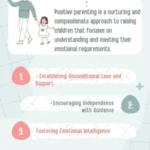Navigating the tumultuous waters of child behavior is a challenge faced by every parent. The tantrums, tears, and testing of boundaries often accompany the journey of raising a child, particularly during the notorious third year. In this exploration, we delve into effective strategies for dealing with child behavior, with a focus on fostering positivity and understanding.
Understanding the Roots: The Terrible Twos and Beyond
The infamous “terrible twos” mark the onset of conflicts and challenges in child behavior. Tantrums become a language, and defiance becomes a form of expression. It’s crucial for parents to recognize that these behaviors stem from a child’s growing need for independence and their struggle to understand and communicate their emotions effectively.
Phrasing Limits Positively: Guiding the Path to Good Behavior
One key approach to managing child behavior is phrasing limits positively. Instead of emphasizing what not to do, redirect the focus on what to do. Positive statements not only reinforce appropriate behavior but also serve as models for effective communication. By avoiding negative language, caregivers create an environment that minimizes defensiveness and resistance in children.
For instance, instead of saying, “Don’t throw sand,” phrase it positively as, “Keep the sand down low to protect everyone’s eyes.” Providing reasons for limits helps children internalize rules, fostering a better understanding of social norms.
Swift Action: The Key to Effective Discipline
Dealing with undesirable behavior requires swift and consistent action. Immediate intervention, such as removing the source of trouble or using a firm “no,” sets clear boundaries. Whether it’s resolving a toy dispute or addressing a disruptive action, parents should act promptly to send a clear message. Simultaneously, distraction with an alternative activity or toy helps shift a child’s focus away from the problematic behavior.
Balancing Discipline with Rewards: A Holistic Approach
While addressing bad behavior is crucial, reinforcing good behavior is equally essential. Parents should strive for a balanced approach, where undesirable actions are met with appropriate consequences, and positive behavior is rewarded. Rewards need not be extravagant; often, a simple praise, cuddle, or engaging story on a parent’s lap can be powerful motivators for a child.
The Attention Equation: Shifting Focus to Positivity
Children often receive more attention for negative behavior than for positive actions. To cultivate positivity, parents must consciously shift their attention to acknowledge and appreciate good behavior. By doing so, parents contribute to shaping a child’s understanding of what is expected and valued.
The Power of Consistency: Establishing Behavioral Patterns
Consistency is the linchpin of effective parenting. Children thrive on routine and predictability. By consistently enforcing rules and consequences, parents create a stable environment where children feel secure. Consistency in discipline, rewards, and attention helps children understand the expectations, fostering a sense of stability and security.
In conclusion, navigating child behavior requires a multifaceted approach. By phrasing limits positively, taking swift and consistent action, balancing discipline with rewards, and shifting the focus to positive behavior, parents can create an environment conducive to a child’s emotional and behavioral development.





